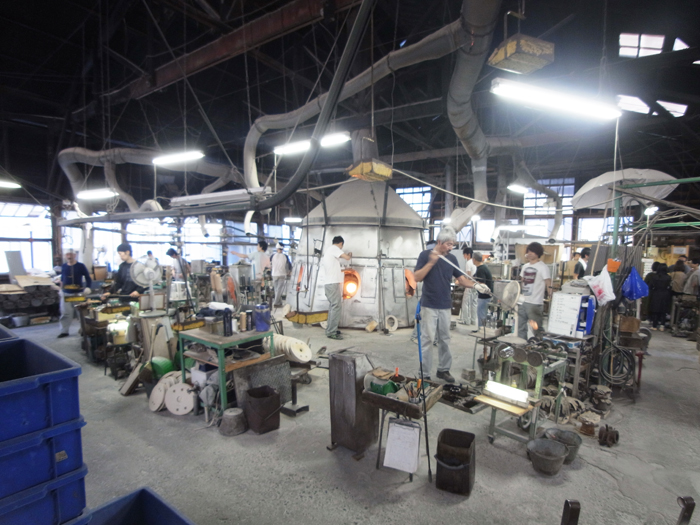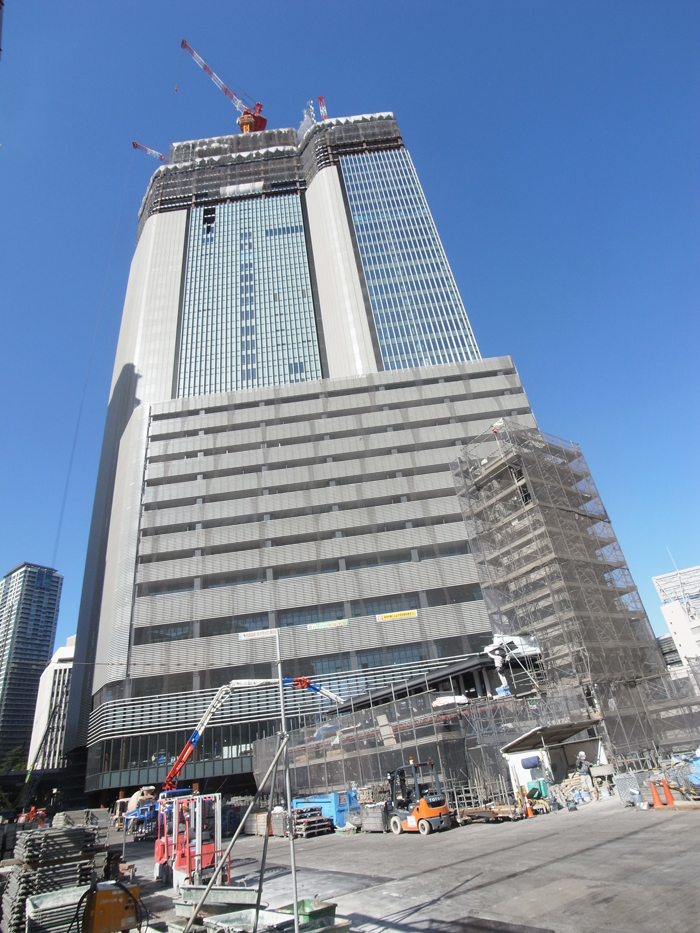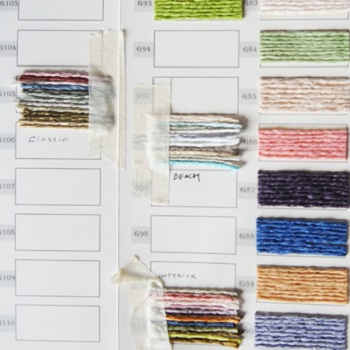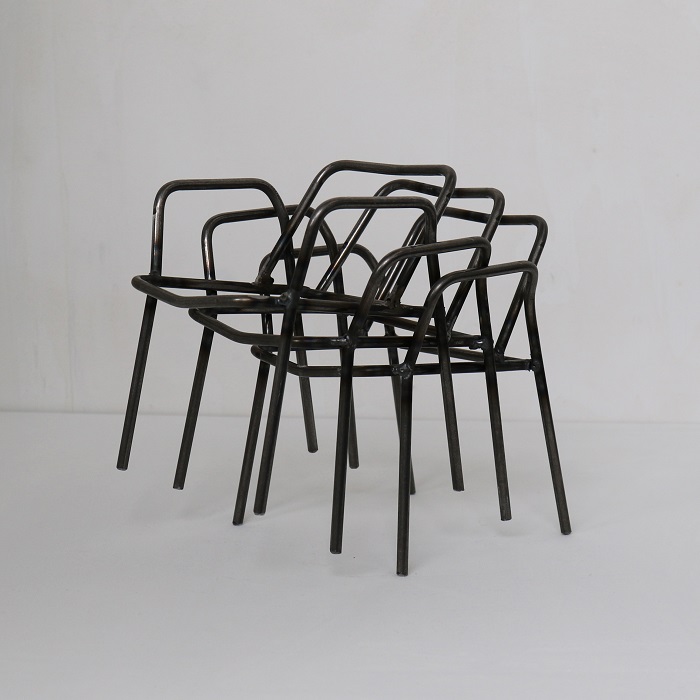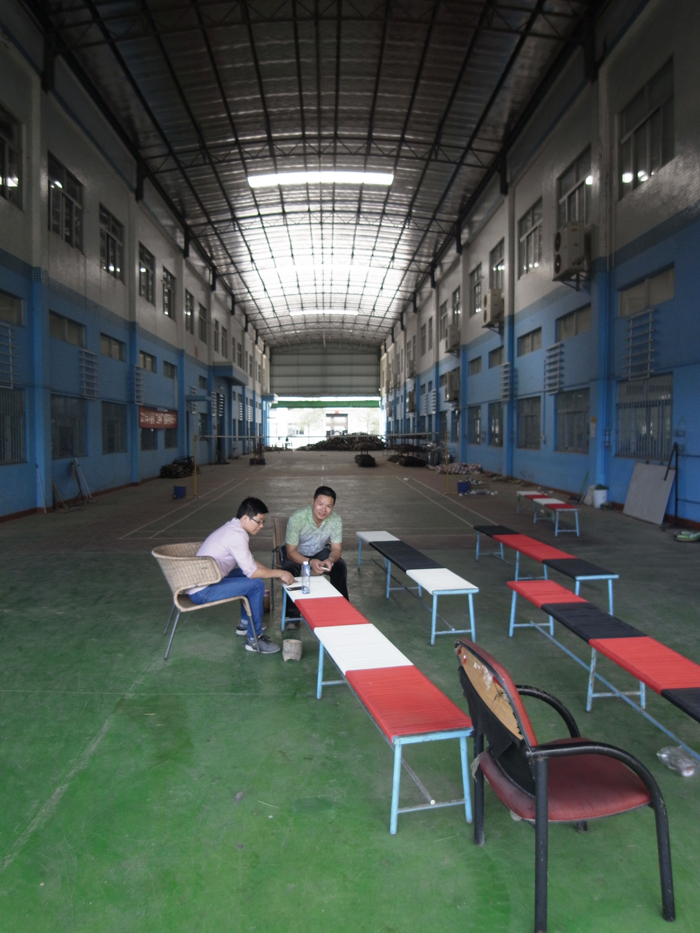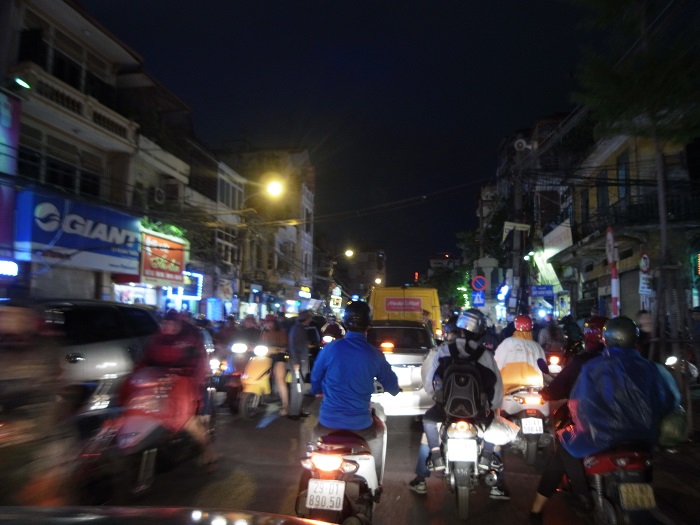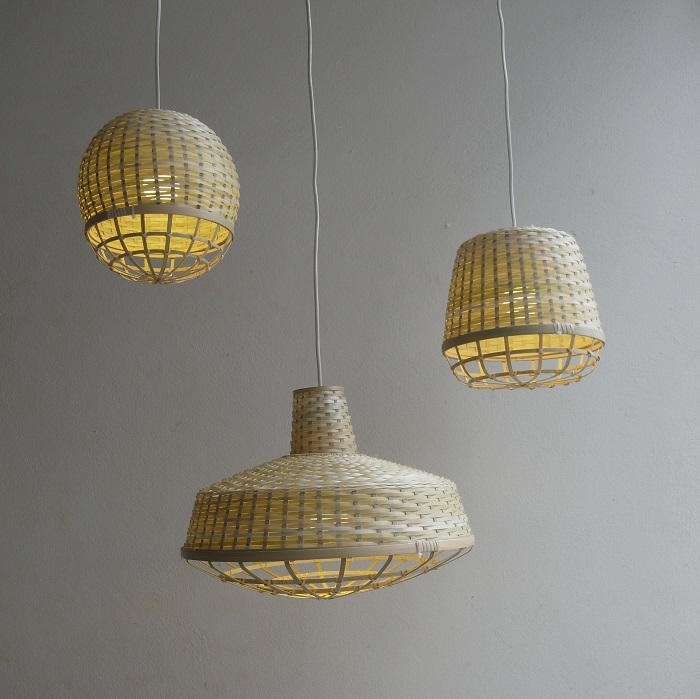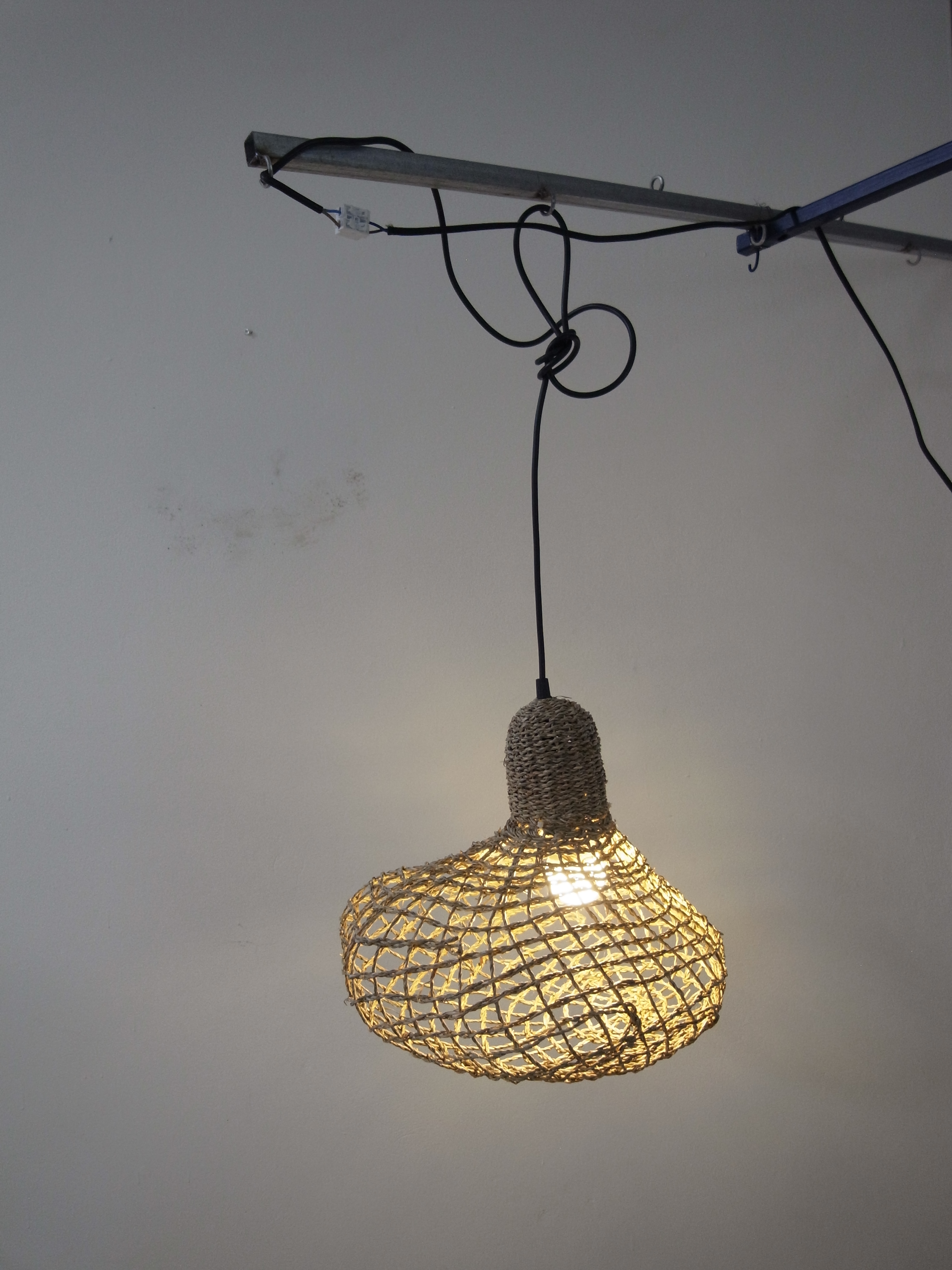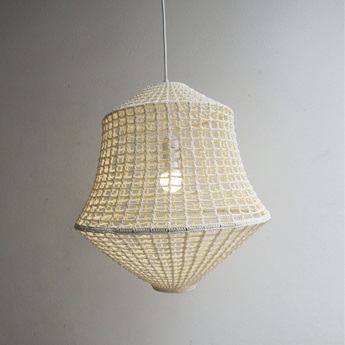08-12-2016
Over ten years ago, when we decided that we also wanted to sell out products on the international market, the very first dealer did not come from Germany, France, England or Belgium but from Tokyo. Cïbone is still one of our most important shops outside the Netherlands. When we celebrated out ten-year anniversary last year in a pizzeria in Milan we thought that we would like to continue this collaboration and particularly that we wanted to intensify it. Once again a handshake was enough to seal this agreement.
A few weeks ago I flew to Tokyo to discuss the designs for the basement of a warehouse in Hakodate. This is actually a very big project (for us), in which I am able to define the ideas for the layout, the architecture, the objects, the lighting and the furnishings for the entire storey. A few months ago, a contract for a restaurant in Tokyo was added to this. In Japan – once more it seems – they are not afraid to turn words into deeds.
Hakodate is an old harbour city with a rich history in the north of Japan. The region is a gastronomic hot spot due to the fresh fish, the milk products and the meat. The food departments in Japan are always in the basements of warehouses. So it is not surprising that I was asked to make plans for several speciality restaurants and shops.
The starting point for the design is to create a world in which it seems as if you are walking outside in the shop-filled streets of an old city. Each shop is built onto the next and the whole seems to have grown organically. This is actually super Japanese, because when you visit a restaurant in Japan, which can be located on any storey due to the exorbitantly high process per square metre, such as in a basement or on the 33rd floor, they very often succeed in creating a completely different world that makes you feel like you have stepped into an authentic restaurant. When you step outside again, having enjoyed a fantastic meal and a wonderful experience, you find yourself once again in the middle of the chaos of Tokyo, the city of endless possibilities.
It is actually quite incredible that my ideas, focused around an organic, seemingly methodically limited approach, are embraced on this scale. I call it a seemingly methodically limited approach because most plans are based on the predictability and uniformity of people, but it is much more logical in practice to use the whimsical qualities of people as starting point – to plan for ‘unplanability’.
Striving to achieve organic growth, inspired by the individual needs of each user and using only the possibilities that present themselves instead of a central approach and thought; this seems logical, but it is almost always rejected as this approach at first seems to be more risky. Particularly in Japan, where things are meticulously planned and carefully considered, you would expect there to be very little room for this way of thinking. But nothing could be further from the truth and I have once again been given the chance to realise my ideas.
Having just landed at Narita airport, I immediately sat down at the table with a pile of drawings. For hours we went through each point of the architecture of the shops, the interiors and all details. The day after had been reserved for publicity and we visited the factory (Shotoku Glass) where perhaps the most beautiful product in the world is produced: the wafer thin, simple glass, created with a dent that is made by the glass blower sucking air inwards just before the glass is taken out of the mould. Once you have held such glass in your hand, it opens a whole world to you. I was also allowed to try blowing glass and with the necessary help I managed it (much thicker and irregular glasses).
The following morning we went to visit the construction site, where at the foot of a gigantic building a much smaller building is rising up in which the restaurant will be located. In Tokyo they have the rule that you may build more volume in the sky than on the ground, whereby the restaurant will be located at the foot of that enormous building in the middle of the green space opposite the American Embassy. On that same day we made plans and sketches. In the following week, when I had just returned from my trip through Asia, I sent the preliminary design in the form of a few colourful messy sketches with which they set straight to work. It is the first time that I have only had to produce ideas and monitor the process, and all this with an incredibly dedicated team.
To China for IKEA
On Sunday the journey continued on to China, where I met Brian, Carmen and Suzanne. Suzanne accompanied us to make a photo reportage. We were met at the airport by the local IKEA team and were driven straight to the hotel in Shenzen. I was a little unsure of my coming to China and would have rather spent three days extra in Hanoi. It seemed to me more logical to send prototypes and models and to mail or Skype, but I was already in Asia and the IKEA team found it very important so I got stuck in.
China was astonishingly modern, at least what I saw of it along the road we travelled for three hours. The hotel was perhaps the largest I have ever seen, with corridors of more than four metres wide. This made us wonder whether the rooms were equally as spacious or that their size was at the expense of the rooms. They turned out to be ballrooms, just like the tables, the dining room, the beer bottles – everything in the hotel was big. When you have just come from Japan, where everything is carefully considered down to the smallest detail, and modesty is the rule, the pompous and opportunistic China stands in stark contrast, without suggesting that it is not very intriguing.
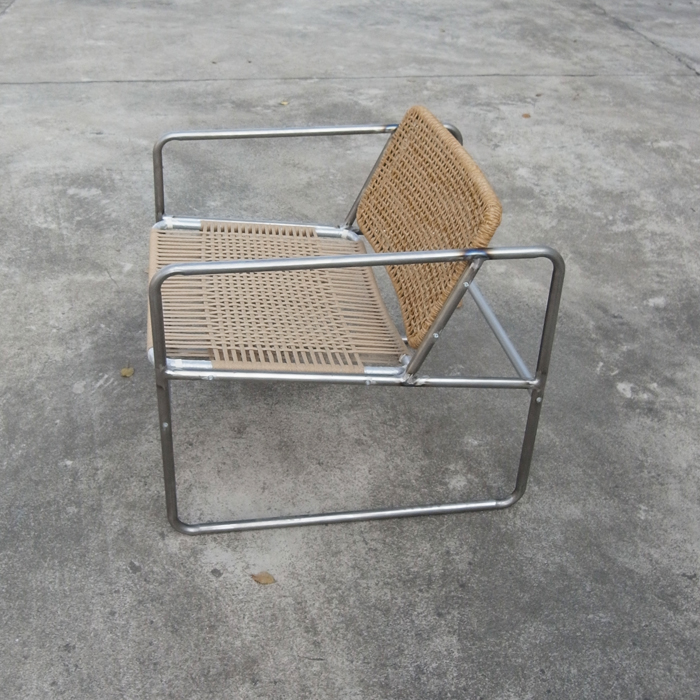
The next day we set out early to visit the factory where they had the prototype of the knockdown tube chair with paper fibre ready for us. The factory, unsurprisingly, was enormous as well as modern and is managed by a young man who took the business over from his father a few years ago. The chair they had made was practically perfect. We only had to adjust the position of the back, and to choose the colours of the paper fibres.
After defining the alterations to the chair and finalising the design, there was still time before we left for the airport. So, inspired by a primitive tube bender that stood in a bench vice in the workshop, I suggested making the other chair, which had failed in rattan, in steel. This was a stackable chair that needed some degree of three-dimensional insight in order to even make it. I had previously encountered this when it turned out that nobody could even make the chair as a model and I, despite my close proximity and explanations, found it difficult to realise the models.
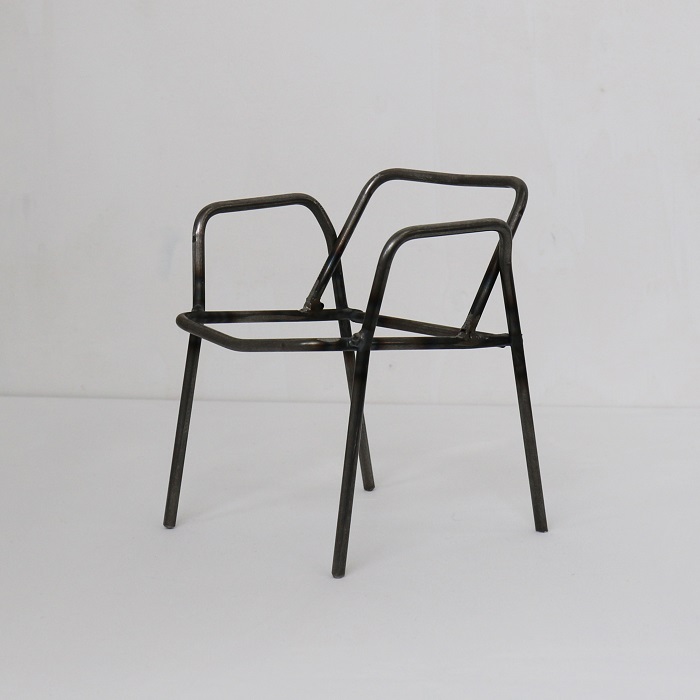
The biggest problem in making the rattan chair in Indonesia was not the concept, but the double curves next to each other in order to create a flowing line from the arm to the back leg. In the central factory space – an enormous inner space has been created there by constructing a roof between two parallel buildings – where everyone spends their break, were a few really nice sofas next to a badminton court. We asked if they could make a few prototypes of these for the collection. We only superficially discussed the detail of being able to fold-in the legs. At the end of the afternoon we got back into the cars that were waiting to take us to the airport for our onward journey to Hanoi, Vietnam.
To Vietnam
We arrived at the hotel after midnight and the streets were deserted. I had been in Hanoi years before when we developed the palm wood baskets and the thick tableware for Fair Trade Original. It is a wonderful city with a legendary anarchic traffic system, in which no one looks behind them, there are almost no traffic lights and everyone continually squeezes through the traffic from all sides at a smooth, slow pace. Despite this there are very few accidents. When asked about this, the answer was that there are a lot of accidents, but these mainly happen on the highways outside the city. When a pedestrian wants to cross the road, you just start walking, not too fast or too slow, straight across the street. The whole idea that it is possible for so many people to move from A to B at the same time in complete chaos is a wonderful idea and makes me very happy.
Traffic was as expected the following morning and we found ourselves in the amusing chaos. We drove practically the entire route together with cyclists, mopeds, scooters, cars and even pedestrians beneath the elevated monorail that is still under construction. The only sounds of dissatisfaction I heard were about the useless way in which the government is realising this elevated rail system: three contractors, deposed politicians and goodness knows how many delays have given the citizens something to complain about. Otherwise happiness is all around.
This time we had a slightly more flexible schedule. Not until the following evening were we flying again. The manufacturer had made lots of prototypes and there was a team of weavers ready to make prototypes and realise alterations if necessary. The showroom was full of lamps, most of which were not particularly beautiful, but the possibilities were visible. I thought that some of them had been made for us because I had sketched identical shapes, but these turned out to be from another IKEA team.
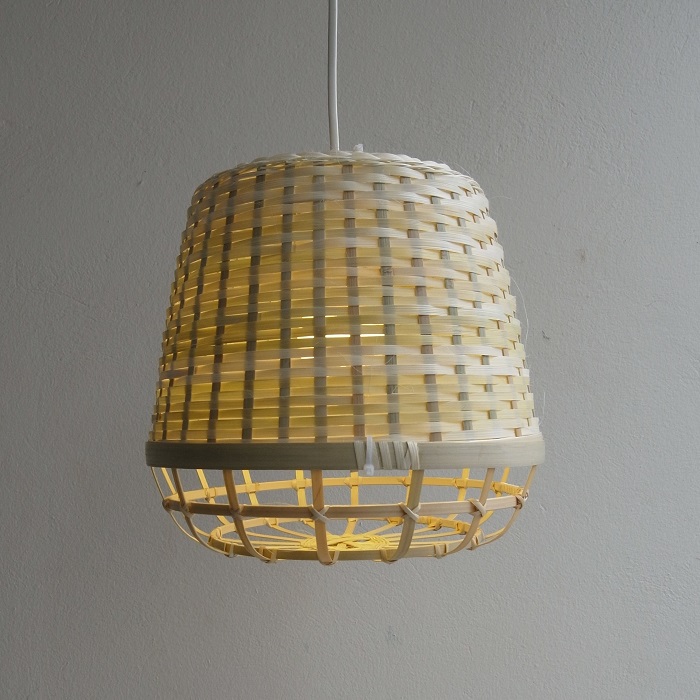
The bamboo work lamps I had designed had worked out quite well and we only had to discuss a series of adjustments and additions in order to set the weavers to work. The lamps give the impression that they have existed for a long time and are part of the tradition in which scaffolding is also made from bamboo.
The seagrass lamps were not so successful, or just were not beautiful. The seagrass had emerged as an alternative when an attempt had been made to produce one of the designs in this material. The material turned out to be very durable and rope-like, which made the shapes amorphous.
After around ten minutes I wanted to start a “summerize” (a summary of all issues per design). Apparently that was too soon. First we had to sit down quietly, so I did this. When everyone had finally taken a seat, I stood up and started with the bamboo lamps. The game had begun: I said something and then everyone had an opinion about it and then a decision was quickly made or a problem identified. These were problems with production, safety, easy of use or whatever. What was great was that it all went really quickly and that we were working with a great deal of professional knowledge, so that the decisions made are usually the right ones, or the risks are well considered – all rather Japanese. We subsequently discussed the various options for the seagrass lamps, of which only the first amorphous design, which was conceived from the limitations of the material, turned out to meet expectations.
Finally we were left with a crocheted lamp. Brian saw potential in this and I found it shapeless. We had previously made a prototype with rope, but the material that had been used was ultimately unsuitable for the design. Brian had it hanging at home and really liked it, because of the effect created by the double layers. The crocheted lamps of the other IKEA team seemed to be a rougher variant of the fibre used in fish traps, which I had suggested as a last attempt to realise the design. But there were no suppliers that could deliver this technique. The crocheting was actually exactly the same, but more traditional and the fibres are much thicker. The technique and the effect it creates fits in with the very first handicraft idea we had to make lamps.
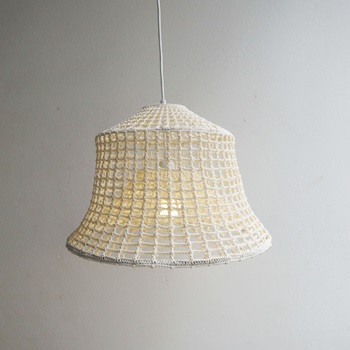
During the discussions we came upon the idea of also letting the inner shape hang down so that two different shapes can be created. We then sketched another version. We came up with colours for the round bamboo lamps that can therefore be hung in clusters, and that was the end of the day. The collection had almost doubled in quantity, after spending just one day with the tam and having the freedom to do everything, think everything and say everything I wanted. Brain concluded by asking one last time: “and Piet are we ready? Since we’ve got you here let’s take advantage of it!”. I had no more new ideas. Except of course an idea based on the essence of bamboo, but we will hopefully make this another time.
We spent the next day finalising the details and analysing the models that had been made in the evening. We finished earlier and actually achieved much more than expected. Super useful, efficient and inspirational, such a nine-day trip to Tokyo, Shenzen and Hanoi.
This post is also available in: NL
« Back to blog
